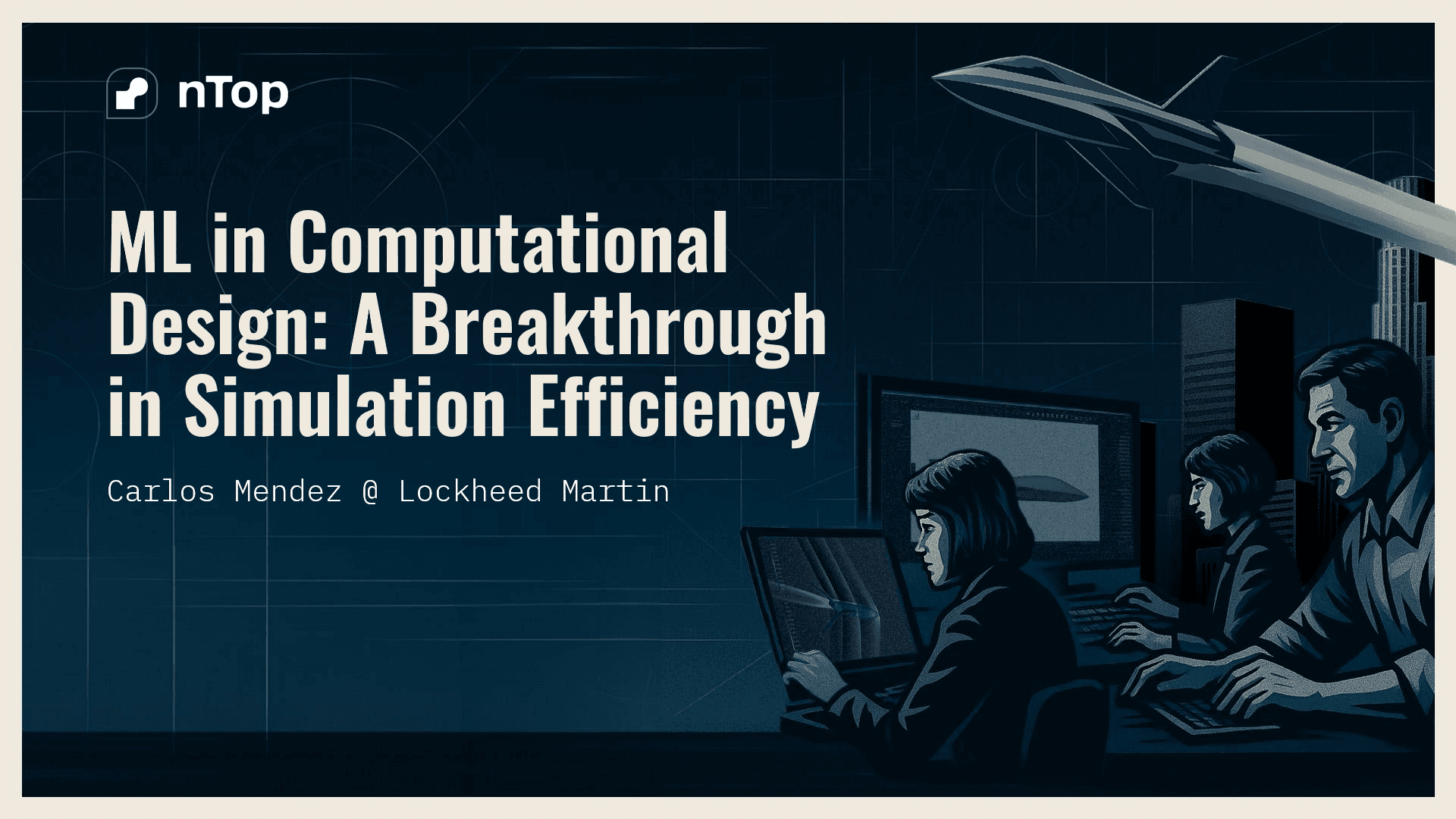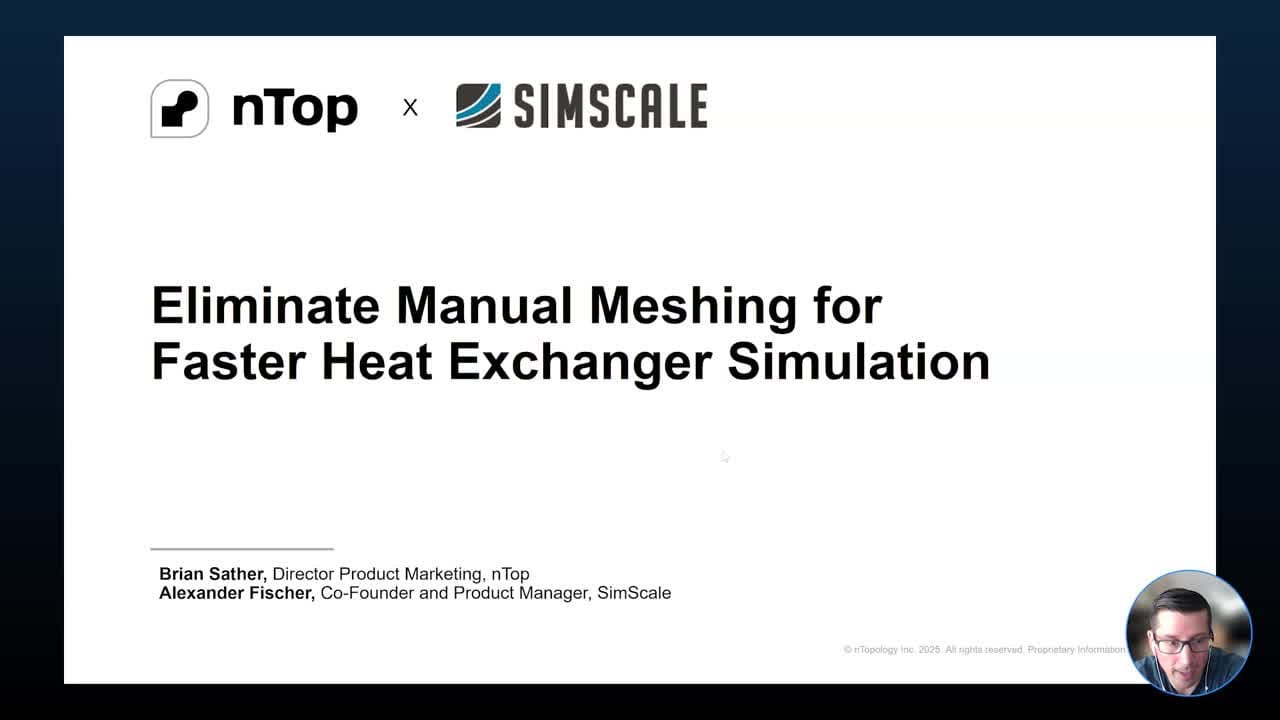An nTop intern’s experience: Learning computational design and creating a lightweight drone

Written by Zenchi Sun | Intern at nTop
Published on October 3, 2024
Applications
Key Software Capabilities
- Generative design
- Simulation
- Topology optimization
“So, where do you go to college?” was the recurring question people asked me on the first day of my internship. I was flummoxed. As a rising junior on the high school’s robotics team, how was I supposed to explain to PhD-educated adults that a kid had infiltrated their organization as the youngest ever nTop intern? As I explained my age, the look of shock and confusion was ever present on everyone’s face. This shock would only evolve into understanding a few weeks after when people saw how fast I was learning the software. My lunchmate sitting at the desk next to me told me, “This is going to be a steep learning curve”. Would I be able to learn this software? With my lunchmate’s warning on my mind, I went off to confront this alien software with an intriguing UI and something called a notebook.
nTop is a computational design software that is capable of handling the complex with ease due to 3D models represented as mathematical functions instead of the traditional vertices and faces. By using mathematical representations, nTop offers a level of flexibility and power that conventional CAD programs can not match. This fundamentally different approach allows for fully parameterized workflows, meaning you can modify your model by simply adjusting a few key parameters. Instead of manually redesigning an entire model to incorporate small changes, you can update the design in seconds, saving hours. I didn’t understand the full power of parameterized workflows until it suddenly hit me–this software is a game changer!

When dealing with complex designs with many interdependent parts in nTop, one can set relations between many different parts in a design. This allows it to adjust one component of the design - whether it’s changing the size, shape, or optimizing its structure - and automatically updates the entire model without breaking the design intent of the model. This drastically increases the efficiency of going through many design iterations and reduces the manual work of consistently rebuilding models.
Coming from high school robotics, manual remodeling was a huge bottleneck. As we go through rapid prototyping for many components, we would often adjust something seemingly miniscule such as the length of a channel or the thickness of a bracket, but manually altering these components would lead to a domino effect where interconnected parts also must be modified. With hundreds of unique components on our robot, this took a significant amount of time and increased the chances of making small CAD mistakes. The difference nTop would have made in our robotics team would have been immense; we could have focused more on experimenting, testing, and refining our designs, rather than being bogged down by manual re-modeling. I regretfully thought of all the extra hours of sleep I would’ve gotten if I had learned nTop before!
When tasked with designing a drone fully in nTop that is light enough to fly, yet strong enough not to break in a crash, it felt like a monumental challenge. There were so many small parts that would have to work perfectly in tandem. I kept asking myself, “how do I make this fully parameterized? What features of nTop would I have to incorporate for this to work?” And the biggest question looming over me, “am I technically skilled enough to pull this off?” These thoughts circled my mind, often haunting me in my sleep.

Once I started modeling, fear slowly transformed into clarity. Clarity turned into mastery. I began with the construction of the basic shape. Even for this initial step, the interface made it feel intuitive to build a framework I could later refine. Moving on, I applied shelling to hollow out the excess material in the model. Then came the dreaded step of topology optimization. The making or breaking of this model relied on being able to complete this complicated step. To my surprise, nTop handled it with ease. It removed excess material that wasn’t contributing to the structure integrity specified by my loads, creating a model not only efficient with weight but also strategic with strength.
After completing the initial model, it was still over my 4-pound weight target, coming in at 7 pounds. After tweaking a few parameters – shell thickness, model length, and volume fraction constraint – I got it to the 4 pound threshold without compromising the design or structural integrity of the model. I even ran a Finite Element Analysis (FEA) to see how the drone would hold up to different crash scenarios.
What truly set nTop apart was how all these advanced modeling techniques flowed together naturally, all within the same coherent workflow. I could have even run a Python script to automate the generation of new model iterations! Each stage felt like a natural progression, rather than the separate steps that require extensive manual work so often found with traditional CAD.
Learning nTop has been an eye-opening experience for me. It’s not just about learning new software, it’s discovering a completely new approach to thinking about the design process. To anyone considering learning nTop, I’d say go for it! If you dive into learning nTop with some determination, you will quickly discover its intuitive design, and gain access to some of the most powerful design tools available right at your fingertips. So many cool use cases besides latticing have not yet been explored, and I am excitedly awaiting the day when this software is used as a key component in all industries. If a high school student can do it, so can you!

Zenchi Sun
Intern at nTop
Zenchi Sun is an 11th grader at Avenues: The World School. He interned at nTop, where he designed a drone, and currently leads his school’s robotics team. Passionate about technology and engineering, Zenchi is dedicated to furthering his skills in the field.




